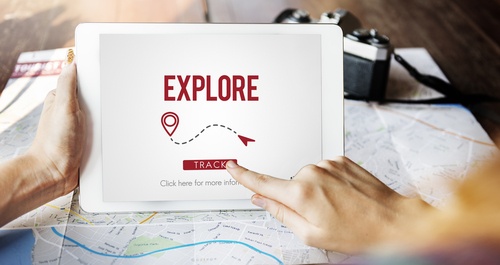It’s no secret that we as humans like to surround ourselves with like-minded individuals - people we can identify with and who look, act, speak, and think in a similar fashion. And for years now, companies have marketed products leveraging this desire for identification and connection to build scaleable customer bases and establish brand loyalty. 
For example, a company looking to target urban professionals might create a magazine ad highlighting a young, sleek, well-dressed man or woman in a bustling, big-city landscape in which the company’s product significantly adds or assists the subject’s overall way of life.
Known as lifestyle branding, it’s perhaps one of the hottest trends in the travel industry in the last few years.
As travel companies search for new and innovative ways to differentiate themselves from increased global competition, lifestyle branding has become an increasingly value-added tool to capture younger, more adventurous travelers - as well as older, more seasoned travelers - who are looking for more than efficiency of service or products.
Clean, comfortable hotel rooms or enough leg room in coach are no longer enough to drive profitability and growth, and travel companies - hotels, airlines, travel agencies, tour operators - have started thinking critically not just about the products and services they offer, but how they position those products and services to capture different segments of market share.
A recent report from The Highland Group indicated lifestyle branding within the travel industry increase by more than 20 percent from 2009-2014. In addition, travel industry publication Skift recently named lifestyle branding as one of the top trends for travel companies in 2015 and beyond. Clearly, travel companies are taking notice of the import of lifestyle branding in targeting new consumer pools, but how to best leverage it into a value-added proposition is still something of an emerging development.
The name of the game in lifestyle branding is how a company markets and positions their products or services - or, perhaps an alternate definition is how a company bests creates a sense of connection and identity between their products and potential customers. Today’s traveler - particularly millennials and younger travelers - seek a more personal, individualized experience with the products and services they purchase, and the travel and tourism is no exception.
Travel companies looking to transform their image into more of a lifestyle branding vein should consider the following few points in order to optimize their strategy and reengineer how they’re perceived by would-be travelers:
1). Outreach: A large component of lifestyle branding is obviously customer engagement and how you create a platform for customers to enter into a dialogue with your company and its offerings. Because so much of lifestyle branding is based on fostering emotional connections with customers, it’s important to take your message to where your customers spend most of their time. In today’s digitized world, social media, blogging, content marketing, mobile apps and special or exclusive events are key drivers in enhancing your lifestyle brand and telling your story in a way that attracts your target market share. For example, an Instagram campaign is a cost-effective, efficient way for a travel company to promote a product or service targeting at millennials in a forum where millennials often interact. Photos depicting a twenty-something subject windsurfing off the coast of Tahiti can be shared and distributed with ease and have a better chance of generating interest than a traditional ad in a print publication.
2). Reinvention: While outreach is important, sometimes adopting lifestyle branding principles means reimagining entire product or services lines from the ground-up. It can be an intense, in-depth process, but luxury hotel companies like the Four Seasons and Conrad have undertaken this mode of reinvention with great success and impressive ROI - both companies tinkered with or rebuilt entire products to cater to the lifestyle segments of the market they desired to attract. With an emphasis on design, cultural integration, exclusive events, and the creation of unique, branded products created to extend the travel experience beyond the actual trip, companies can forge a resonance with customers that then can be leveraged into long-term relationships. In addition, this connection with customers can also be transformed into outreach as customers share their experiences on social media, travel review websites, and other platforms.
Now, this is not to say lifestyle branding is all surface-level appeal and no substance - travel companies must still provide products and services of interest to travelers, and these services and products must be rendered with efficiency and convenience. And lifestyle branding is not merely a visual play. In fact, travel companies who rely primarily on visual appeals without digging deeper into whether their products and services actually align with the lifestyles their customers are striving for can often find themselves wasting vital resources.
But human beings are emotional creatures and travel itself is an extremely emotion-driven enterprise. With that mind, it makes sense why the travel industry has realized creating products, services, and marketing that captures this emotionality can be a key differentiator in a crowded, global market.
















